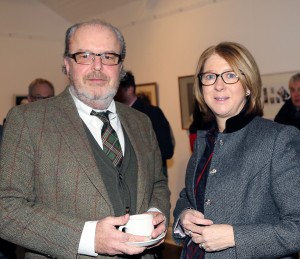European Investment Bank Director urges local stakeholders to “think big”
Waterford must enter the ‘big league’ of Irish cities and become part of an economic ‘Atlantic Corridor’ which can counterbalance the dominance of the Greater Dublin Area (GDA). That’s the view of Limerick resident John Moran, Director of the European Investment Bank and former secretary general of the Department of Finance, who was the keynote speaker at the ‘Waterford 2040 Vision’ breakfast seminar, which was held at Garter Lane on Tuesday last.
Speaking at the EY-sponsored Waterford Chamber event, which drew a receptive and enthusiastic audience to the theatre, Mr Moran’s proposal, to create a link-up between Waterford, Cork, Limerick and Galway, won preferential support (on a show of hands) over the new National Planning Framework (NPF).
This joined-up approach advocated at the seminar represented a change from the ‘go it alone’ policy which has dominated so much discourse in the city and county for many years. The wider regional approach reflects the modus operandi of City & County Council Chief Executive Michael Walsh who told this newspaper that we can no longer afford to think in “wearing the county jersey” terms. But the importance of further alliances with Cork and Limerick (and in turn, Galway) can only be realised if new, long-awaited motorway links are developed between Waterford, Cork and Limerick.

Southern Assembly Director Stephen Blair told the seminar that this regional approach, in addition to the NPF, provided Waterford with a once in a generation opportunity for growth. “This is the best opportunity in a great many years for Waterford city to develop,” he stated.
Citing the €2 billion Urban Regeneration and Development Fund outlined in Project Ireland 2040, Mr Blair said these monies could help considerably in creating a regional counterbalance to Dublin.
He said it was essential that the relevant stakeholders identified what was needed in terms of infrastructure gaps, human capital gaps and venture capital gaps. Doubling the city’s population will require new people and a new level of migration via a regional spatial strategy – i.e. the NPF.
“Waterford, in addition to the other three cities on this potential corridor, can become, collectively, a new regional powerhouse, in driving fresh investment and creating a new, liveable, working and sustainable urban option beyond our capital city,” John Moran added.
“Dublin simply requires an exorbitant and unaffordable level of investment to remedy its current transport and housing issues. Taking that into account, the Corridor cities could be collectively marketed by the IDA, citing its three universities (hopefully four before too long), airports, road and rail infrastructure, and, most importantly of all, its skilled workforce.”

At the Breakfast Forum were Ger Hurley (CEO, Waterford Chamber) and Louise Grubb (Q1 Scientific, Guest Speaker.)
Richard Rodger, the Chief Executive of Metsitaba and co-founder of Nearform, who also sat on the seminar’s panel, believes sustainability is a key component of future economic development and foresees driver-less cars and more public transport options driving the move to more city living.
Fellow speaker Nollaig Brennan (of the Gracedieu-based Story House, which counts Sabina Higgins as a patron) told the audience that further enhancing Waterford’s already strong cultural life would augment Waterford’s attraction to new workers.
Staying on that theme, John Moran said making the city more attractive for incoming workers was vital. Future generations of workers may not own cars in today’s numbers, and may opt for city, as opposed to suburban living.
Some 500,000 one-off houses had been built across the country over the past century, he added, something which was unlikely to be repeated over the next 100 years, as the country turns its focus to further urbanisation. Mr Moran said the European Investment Bank is drawn to major investment projects and he believes the Atlantic Corridor cities could conceivably devise such EIB-backed developments.
Last November, Limerick secured an €85 million EIB loan for the 3.7-acre Opera Centre project, which represents the EIB’s largest single investment in Ireland to date. The office development aims to create 3,000 jobs.

